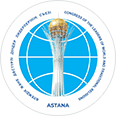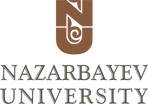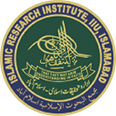Beket-Ata Underground Mosque (Oglandy)
The Beket-Ata Underground Mosque is a unique religious monument of the 18th century located in the Mangystau region. It is revered as a sacred site and serves as an important pilgrimage center for Muslims of Kazakhstan and the entire region.
Location
Mangystau Region, Oglandy Tract, about 230 km east of Aktau.
Historical Background
The Beket-Ata Underground Mosque is a remarkable spiritual and historical shrine situated in the picturesque Oglandy area. It was founded and built by the renowned Kazakh religious leader, Sufi, prophet, and enlightener – Beket-Ata.
According to popular tradition, Beket-Ata built four mosques in different regions, but the most significant and majestic of them is the underground mosque carved into the chalk cliffs of the Oglandy tract.
- Ak-Mosque: The first mosque he founded, located in the Kulsary area (Atyrau Region).
- Beineu Mosque: The second mosque, situated about 20 km from the modern settlement of Beineu (Mangystau Region).
- Baishatyr Mosque: The third mosque, constructed in the Baishatyr area (Ustyurt Plateau).
- Underground Mosque in Oglandy (Main Shrine): The deepest, most famous, and symbolic mosque carved into the chalk rocks of Oglandy (Mangystau Region).
Religious Significance
This mosque, carved directly into a high rock, served not only as a place of worship but also as a Sufi school. Here, Beket-Ata taught literacy, delivered sermons, and offered wise counsel, fulfilling his educational and spiritual mission.
The underground mosque became his final resting place and remains a site of deep reverence and pilgrimage to this day. Associated with Islamic Sufi traditions, the mosque continues to host prayers and pilgrimages, where believers seek healing, wisdom, and spiritual support from the saint Beket-Ata.
The Oglandy mosque is considered the oldest and most significant of all four. Named in honor of the spiritual leader himself, it became his eternal abode. Its spiritual importance places it alongside such universally recognized holy sites as the tomb of the Prophet Muhammad and the mausoleum of the great Sufi Khoja Ahmed Yasawi.
Cultural and Tourist Significance
The mosque attracts both pilgrims and tourists thanks to its unique architecture – carved into rock and shaped to resemble a traditional Kazakh yurt. Special attention is drawn to the acoustics of the chambers and the legends about Beket-Ata’s prophetic and healing abilities.
The mosque is surrounded by a necropolis with over a hundred monuments, making it an important historical and cultural complex of the region. For more than two centuries, thousands of pilgrims have come here all year round, undertaking a long journey to honor the spirit of the saint and receive spiritual blessings.
Current Status
The mosque is protected by the state, and restoration and conservation work is regularly carried out. The area has been landscaped, and a pilgrims’ house is located nearby. The site is included in national and regional lists of historical and cultural monuments.
Today, the mosque continues to function as a spiritual center, open to both pilgrims and visitors seeking to experience the deep cultural and religious heritage of Kazakhstan.


















